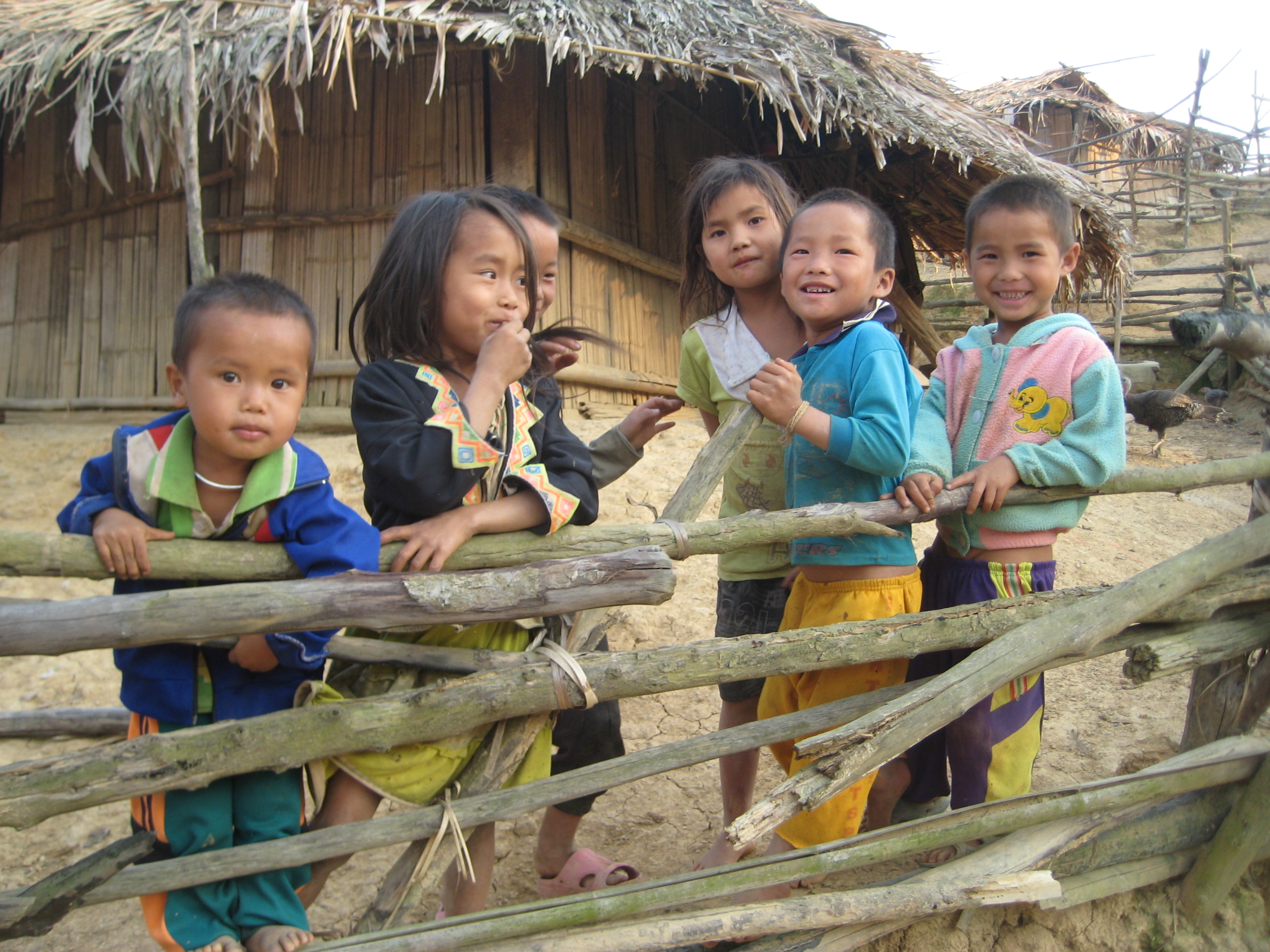The Spirits of Pha Phang
Pha Phang is a tiny highland village in the northern mountains of Laos. There are five huts for the five Hmong families, along with a free-roaming assortment of chickens, ducks, potbellied pigs, a couple of cows with protruding ribs, and three wiry dogs. It is a two-day walk and eight-hour boat ride down the Mekong River from anything resembling civilization. It is not where you want to find yourself, as I did, with a parasitic-fueled fever coupled with violent diarrhea, draining me of the energy needed to trek out of there in the morning, as my Hmong guide, Kam Dee, and I were scheduled to do.
“Dis is veellage shaman. He like talk to your spirits,” said Kam Dee. I pulled my head from the bucket and rolled back onto the bamboo bed. It was 3 a.m. and between frantic trips outside and meetings with the bucket, I had yet to find sleep.
The traditional Hmong belief structure is based primarily on animism–the belief that all natural objects and individuals have multiple souls. The Hmong view illnesses as having a natural or a spiritual cause, with the latter resulting from a “loss of souls” or actions or misdeeds that may have offended an ancestor’s spirit.
I very well might have offended one of my evangelical ancestors, as I had spent the last week of my Outside Experience interviewing Buddhist monks in Luang Prabang, before heading up river with Kam Dee to explore these highland tribes whose ways are rooted in animism. I suspect, though, that the culprit was the goat soup from the previous night’s dinner.
Nonetheless, there I found myself, in a fire-lit hut, drenched in a cold sweat with my stomach seized in cramps, with 3,000 miles separating me from my wife and baby girl. Serious doubts pertaining to the saneness and rationality of this trip sprouted as Kam Dee and the shaman helped me to sit up on the bed. That is when I realized the entire household, whom I had just met the night before, was up with me. When the shaman shook his sticks and chanted, the family of seven joined in. After roughly thirty minutes of chanting and stick shaking, they stopped, and I drew a long breath.
The eldest in the hut, the grandmother, stoked up the fire and prepared a soothing tea. It was the first thing I had been able to get down in over 24 hours. The shaman set his hand on my shoulder and wished me well before walking out into the night. One of the four children, a six-year-old girl, sat down next to me on the edge of the bed, placed her hand on mine and offered a hopeful smile.
I can’t tell you if it was the shaman’s doing, these simple acts of kindness and concern from strangers, or the soothing tea, but I did feel better. I was far from healed, but I did, finally, sleep.
When I woke, the soft light of dawn fell through the cracks of the thatched roof and thin bamboo walls. Pleasantly surprised that I could stand without feeling nauseous, I stepped over a pile of tobacco drying out on the dirt floor and made my way outside. At over 8,000 feet elevation I could see my breath in the crisp morning air that smelled faintly of wood smoke. I walked a slight incline, where, once at the top, I could see every hut and animal in Pha Phang. I sat on a large log and listened to a cacophony of clucks, crows and snorts, while admiring the bluish haze blanketing the endless rows of jagged mountains beyond.
Soon, it was a bustling scene. It seemed that everyone, including the children were busy fetching water, pounding wooden stakes into the rust colored earth, collecting and boiling water from the stream, hand washing brightly patterned clothing, and filling various wooden troughs with the dried rice husks.
Rarely in the day-to-day dealings of my teacher’s life back home was there time for such observation and contemplation. It had been a long time since I’d felt such peace. And I had never experienced a community like this, where everyone, even the smallest, are filled with a sense of purpose while remaining rooted with their land and their pasts. A feeling of gratitude enveloped me—certainly I was thankful that I was on the mend, but mostly I felt gratitude for this place, for these people who have nothing and everything.
This trip was meant to provide research for the setting of my novel. It did that and more. Though unplanned and at times quite uncomfortable, I realized then that this was much more than an Outside Experience; this place and these people that epitomize what it is to be human had become a part of me, and I had become a part of them.
Jeffrey Mix is a member of the RWW graduating class of 2014. Jeffrey’s research trip to Laos was aimed towards his Creative Thesis, a novel-length work of fiction, which is set between the many Buddhist temples of Luang Prabang and the remote Hmong hill tribes. It was a life-altering and illuminating experience where Jeffrey found out that your best laid research plans often fly out the window. And in the end, those are the moments you most cherish.



